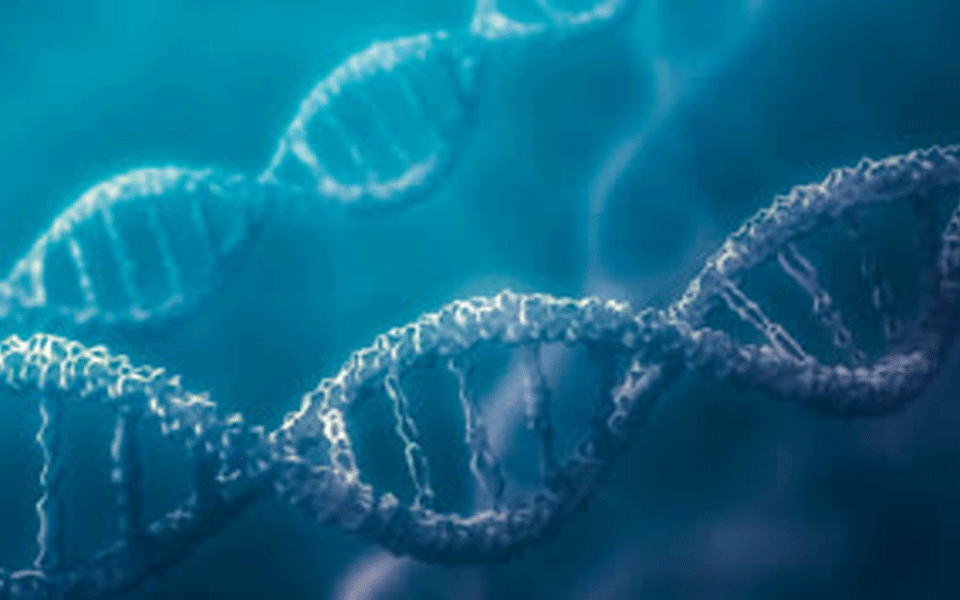New York, Sep 22: In a first, US researchers have identified a new genetic disorder, which was previously described in animal models, in a human patient.
Researchers from the Michigan State University found that the disorder is caused by mutations in a gene known as ornithine decarboxylase 1 (ODC1).
It is defined by a number of clinical features including large birth weight, enlarged head size, hair loss, reduced muscle strength, skin lesions, hearing loss and developmental delays.
"This remarkable case represents the first human example of a disorder that was described by researchers in a transgenic mouse model more than 20 years ago," said Andre Bachmann, Professor at the varsity.
However, the disorder is, as of yet, unnamed, and its long-term effects, which include impacts on the neurological system, are not completely known.
The disorder was first identified on an 11-month-old baby girl in Michigan.
In the study, published in the American Journal of Medical Genetics Part A, blood samples for testing were drawn at age 19 months and 32 months.
Two developmentally normal, age/gender matched patients that were being sedated for outpatient same-day procedures served as controls.
Red blood cells obtained from the patient showed elevated ODC protein and polyamine levels compared to healthy controls.
"The ODC1 gene plays an important role in a number of physiological and cell developmental processes including embryo and organ development," said Caleb Bupp, medical geneticist at Spectrum Health -- a US-based health care company
The study also showed that the ODC inhibitor DFMO -- a water soluble -- and US Food Drug Administration (FDA)-approved drug may serve as a disease-modifying drug, and an early therapeutic trial in a new diagnosis may prevent some of the clinical symptoms.
DFMO has been used for many years in the treatment of trypanosomiasis -- a tropical disease transmitted by biting insects and more recently entered clinical trials for pediatric neuroblastoma and colon cancer.
In mice, DFMO prevented hair loss and also partially restored hair growth and is considered a well-tolerated drug.
The original ODC1 mouse model was developed by Thomas G. O'Brien in 1995 at the Lankenau Medical Research Centre in Pennsylvania.
Let the Truth be known. If you read VB and like VB, please be a VB Supporter and Help us deliver the Truth to one and all.
Panaji (PTI): As part of a crackdown against tourist establishments violating laws and safety norms in the aftermath of the Arpora fire tragedy, Goa authorities on Saturday sealed a renowned club at Vagator and revoked the fire department NOC of another club.
Cafe CO2 Goa, located on a cliff overlooking the Arabian Sea at Vagator beach in North Goa, was sealed. The move came two days after Goya Club, also in Vagator, was shut down for alleged violations of rules.
Elsewhere, campaigning for local body polls, AAP leader Arvind Kejriwal said the fire incident at Birch by Romeo Lane nightclub at Arpora, which claimed 25 lives on December 6, happened because the BJP government in the state was corrupt.
An inspection of Cafe CO2 Goa by a state government-appointed team revealed that the establishment, with a seating capacity of 250, did not possess a no-objection certificate (NOC) of the Fire and Emergency Services Department. The club, which sits atop Ozrant Cliff, also did not have structural stability, the team found.
The Fire and Emergency Services on Saturday also revoked the NOC issued to Diaz Pool Club and Bar at Anjuna as the fire extinguishers installed in the establishment were found to be inadequate, said divisional fire officer Shripad Gawas.
A notice was issued to Nitin Wadhwa, the partner of the club, he said in the order.
Campaigning at Chimbel village near Panaji in support of his party's Zilla Panchayat election candidate, Aam Aadmi Party leader Kejriwal said the nightclub fire at Arpora happened because of the "corruption of the Pramod Sawant-led state government."
"Why this fire incident happened? I read in the newspapers that the nightclub had no occupancy certificate, no building licence, no excise licence, no construction licence or trade licence. The entire club was illegal but still it was going on," he said.
"How could it go on? Couldn't Pramod Sawant or anyone else see it? I was told that hafta (bribe) was being paid," the former Delhi chief minister said.
A person can not work without bribing officials in the coastal state, Kejriwal said, alleging that officers, MLAs and even ministers are accepting bribes.





